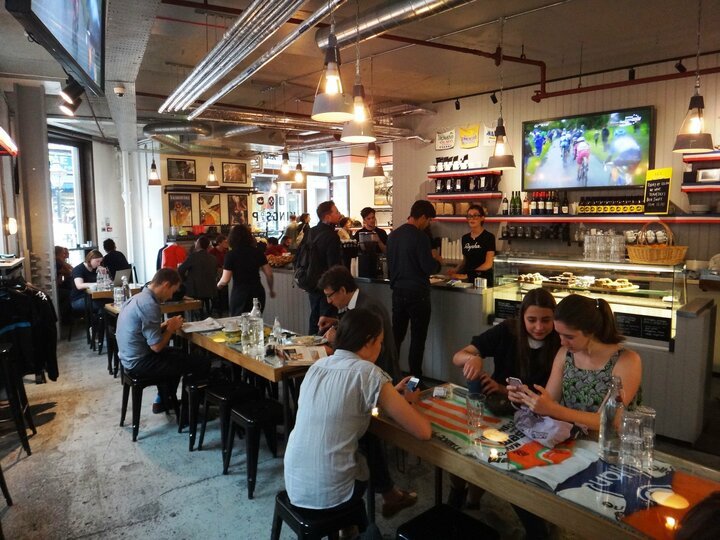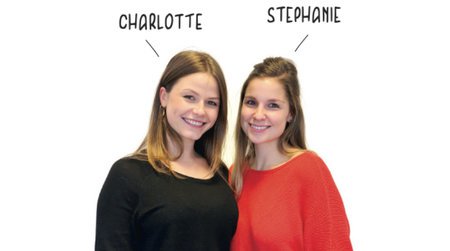
5 must-read retail trends. #1 Community
Yes! The new year has just kicked off, and I am off to a Retail Safari in London with my colleague. We have a clear, not too outrageous goal: to seek inspiration for in-store customer experience and if possible come up with new ideas on how we can help retailers deploy technology to enhance the experience.
Having clocked more than 30,000 steps, we returned to our home base tired but satisfied.
It is our pleasure to share our findings and learnings with everyone with a soft spot for retail and stores in particular.
WHY LONDEN?
The online share of all retail sales in the UK has grown well above 17%* in 2017, with the European average still hovering around 8% (Centre for Retail research.org). In fact, Britain consumers are world leaders when it comes to online shopping. At current growth rates, 50% of all spending in the UK retail market will be done online* (BI insider.co.uk). You could say there's a more imminent urgency here to innovate the concept of the store as we know it.
With omnipresent shoppers moving about channels with the speed of a chatbot high on dopamine, smart retailers are blending channels to serve the customer's needs instantly, regardless of place and time. To do so, they're testing new concepts and in-store technologies.
If you were a retailer testing these new concepts what better place can you think of than a city like London. A global city visited by tens of millions of tourists from all around the world and a mixed population of richer, younger, more digital shoppers.
The perfect setting for our Safari then!

THE BIG FIVE
No Safari is complete before you have been able to spot all of “the big five”, a term originally coined by big game hunters referring to the most difficult animals to hunt on foot. (lion, leopard, elephant, buffalo, rhinoceros)
Today’s Safari is not a about animals though, we’re here to spot the big five trends in retail and see how both leading global retailers and local heroes translate them into the overall customer experience.
Mind you, not all of the trends are necessarily new, but technology infrastructure has evolved to the point that they start to make sense now, a lot of sense.
The big five for today are:
1. Community building
2. De-siloed channels
3. Empowered staff
4. Personalized fashion
5. Phygital experiences
#1: COMMUNITY BUILDING
Shopping in your pyjamas while lying on the sofa and having your goods delivered the same day may by hyper convenient.
But there isn't much glamour to it.
The experience economy dictates that we're no longer interested in buying things, we're interested in experiences, experiences that we can share with our network, our community.
We saw some amazing examples of retailers who are being very successful at building a community around their stores and brand, brands who've essentially become the center of the community.
Two retailers stood out, athletic brand Lululemon (Regent street) and Rapha Cycle Club (Soho, Brewer street).
RAPHA CYCLE CLUB
If your a cycling fan, you've probably heard of Rapha. They sell fashionable bicycle wear and accessories in what pretty much looks like a mix of bicycle workshop and a French café. They offer a huge variety of offline and online experiences to bicycle enthusiasts, ranging for bicycle tours and travels, to bike repair workshops, readings on nutrition,...

They have a huge dedicated Strava group linked to their very own Rapha cycle club so members of the community can compete and meet with one another.

No matter what time of the day or day of the week the café is always packed with members of the local cycling community and as it's visited regularly by the biggest names in the cycling sport. So you can bet cycling enthousiasts from out of town make a point of visiting Rapha's too.
Building a community? Job well done.
LULULEMON
For those who haven't heard from Lululemon, it's a Canadian brand that produces high tech sports and lifestyle gear and is aiming for 4 billion in revenue by 2020.
Building a community is tapping into a groups mutual interest. In Lululemon's case they're going after people who find energy and peace of mind through sport and more particular yoga. Their flagship store on regent street offers regular yoga classes.

Online, Lululemon has tapped into Strava too, members of the community share their running routes in London. You can actually check them out on an interactive mirror in store and have them sent to your e-mailadress.
The community of Lululemon ambassadors consists of 8 global yoga instructors, 75 elite athletes in different, sometimes niche, disciplines and 1500 local store ambassadors or influencers who reflect Lululemon's culture and off course have a deep yet very local impact.
Lululemon is famous for organizing ambassador events and backing the causes of their influencers, supporting initiatives that stick close to the company's core values. Doing so they are creating extremely passionate advocates who'll preach the Lululemon religion across their network.I love it, you can pay several millions to have one world famous athlete endorse you and only tap into the community around that one athlete. Or you can go Lululemon, and probably spend the same sort of money on 1600 ambassadors building insane amounts of trust around your brand. Trust fuels the network growth. Trust comes with authenticity and with authenticy comes the followers
Lululemon now has a massive 4 million followers on Facebook and Instagram.
Curious about the following findings from our Safari? Do not miss a single blog and follow us on Facebook, Twitter or LinkedIn!
Get in touch!
Feel free to contact us
More inspiration or information?
Contact us or drop by. We are happy to help you!



